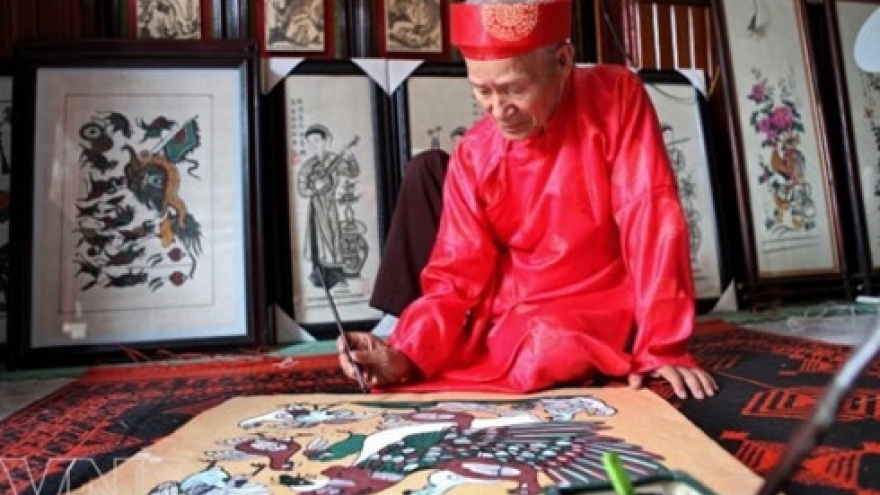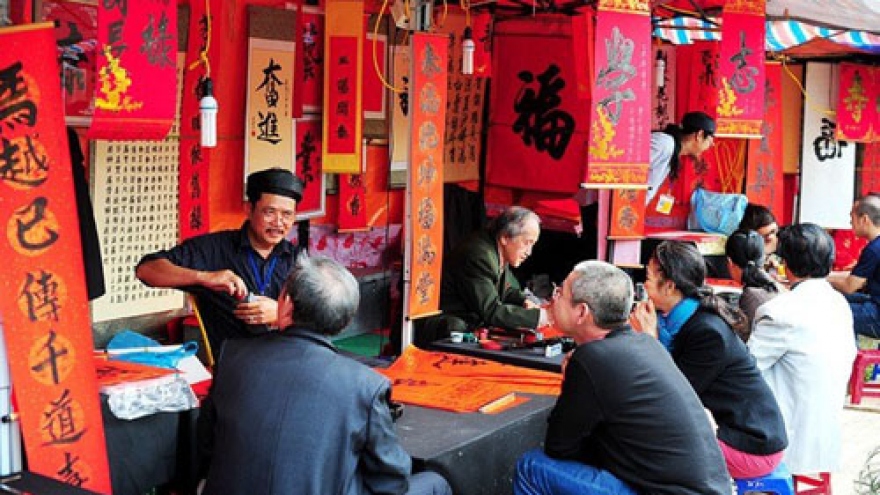Hang Trong folk painting exhibition “The New Classics”
VOV.VN - Hang Trong folk paintings are on display at an exhibition themed “The New Classics” at Dong A Gallery at 115 Nguyen Thai Hoc street, Hanoi. The exhibition introduces the unique value of Hang Trong folk paintings and shows the potential to apply the art in modern life.
 |
| (Photo: hanoitv.vn) |
Hang Trong folk paintings cover such topics as religion, the Lunar New Year, social practices and illustrations of popular stories. Hang Trong is a unique style representing the aesthetic, spiritual, and religious values of the people of ancient Hanoi. The folk paintings are generally colorful and feature major colors like red, orange, yellow, pink, green, and blue. The basic colors are used to create hundreds of paintings in vivid ways that makes Hang Trong folk paintings unique.
The exhibition consists of a space for iconic paintings on three topics: worshipping the Lunar New Year (Tet), patterns and creative designs that may be applied in contemporary design, and products featuring ancient Hang Trong patterns and colors.
Trinh Thu Trang, a lecturer at Hanoi Architectural University, is the founder of the S River group said “At the exhibition, Hang Trong paintings will cover not only classical topics but also contemporary themes. I want to apply the precious traditional value of Hang Trong paintings as a material for contemporary designs such as the containers of Lunar New year jam, rice crackers, and other traditional products of Vietnam”.
 |
| Hang Trong folk painting exhibition “The New Classics”is at Dong A Gallery at 115 Nguyen Thai Hoc street (Photo: baomoi.com) |
This is the first project in Vietnam to analyze the value of Hang Trong paintings. Nguyen Xuan Thanh, former head of the Sculpture Department of the Vietnam University of Fine Arts said, “Hang Trong paintings are unique and used to be designed for people in the city, thus they are elegant and cover much on social affairs. S River’s project not only helps preserve the folk art’s values but also promotes it as new material for contemporary art”.



